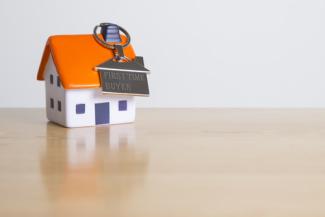
Introducing the First Home Savings Account
With real estate prices having soared in recent years far more than wages, and now high interest rates further pushing costs up, affordable housing is one of the biggest problems facing Canadians today. The recent federal budget officially launched a new program to try and help first-time home buyers save for a down payment.
The First Home Savings Account (FHSA) is technically available April 1st but it will likely take most financial firms a few months to coordinate systems and paperwork to begin accepting deposits. This new program will allow qualifying individuals to invest up to $8000 a year, and $40,000 cumulative, into a tax-sheltered plan. Contributions will be tax-deductible, the same as RSPs, and withdrawals used to buy a first home will be tax free. Unlike the current RSP First Time Home Buyers Savings Plan (FTHBSP), where you can redeem funds from your RSP tax-free to buy your first home, there is no requirement to repay funds taken out of this plan.
You are deemed to be a qualifying individual if you meet the following requirements at the time the account is opened: 18 years of age or older, a resident of Canada, a first-time home buyer. The definition of first-time home buyer is the same as the RSP First Time Home Buyers Savings Plan. You are considered a qualifying first-time home buyer if, at any time in the calendar year before the account is opened or at any time in the preceding four calendar years, you did not live in a primary resident that either you owned or jointly owned or your spouse or common-law partner (at the time the account is opened) owned or jointly owned.
The maximum participation period for the FHSA begins the year that you open your first FHSA plan and ends on December 31 of the year in which the earliest of the following events occur:
- the 15th anniversary of opening your first FHSA
- the year you turn 71 years of age
- the year following your first qualifying withdrawal from your FHSA
If you have not used the funds in your FHSA by that time, you can transfer the funds from your FHSA on a tax-free basis to your Registered Retirement Savings Plan (RRSP) without impacting your RRSP contribution room, or to your Registered Retirement Income Fund (RRIF). Otherwise, you can withdraw funds from your FHSA, but in that circumstance your withdrawal will be taxed.
Unlike the RSP FTHBSP, which has a $35,000 per person withdrawal limit, the FHSA has a $40,000 contribution limit. You can withdraw, tax-free, whatever amount the FHSA grows to, making it ultimately a potentially much larger pool from which to draw from. The same investment options will exist for the FHSA as RRSPs and TFSAs: stocks, bonds, GICs, mutual funds, EFTs and most other investment vehicles. Unlike RRSPs, contributions made in the first 60 days of a given calendar year cannot be allocated to the previous tax year.
You will only be able to make contributions to your own First Home Savings Account; there isn’t a Spousal option. However, attribution rules will not apply to amounts received by a spouse or common-law partner that are contributed to an FHSA. This means that any investment earnings in your FHSA will not be added to your or your spouse’s taxable income regardless of whether you or your spouse fund the contribution, as long as they are used to purchase a qualifying home.
Important! Unlike the RSP, where contribution room is automatically generated based on employment income, and a TFSA, where contribution room accrues based on being the age of majority and a Canadian tax-payer, to earn FHSA contribution room, you must open a plan. Once opened, unused contribution room carries forward to the next year. Anyone who may be thinking of buying a home should open a plan as soon as they are eligible, even if they just contribute a nominal amount, say $1000, to begin earning contribution room.
Funds can be transferred on a tax-free basis from an RSP to a FHSA, and any transfers reduce your FHSA contribution room dollar-for-dollar. The transfer of property from an RRSPs to an FHSA will not restore unused RRSP deduction room. More information is pending on how these inter-plan transfers will take place and whether the CRA will be creating a specific form to facilitate the process.
If you contribute or transfer to your FHSAs more than your allowable contribution room for the year, you will have an excess FHSA amount. Like TFSA and RSP overcontributions, there will be a penalty tax equal to 1% of the highest excess FHSA amount in the month, for each month that the excess remains in the account.
Unlike the First Time Home Buyers Savings Plan, there is no minimum holding period for FHSA contributions to be deductible and eligible for withdrawal. You are able to participate in both the RRSP First Time Home Buyers Savings Plan and the First Home Savings Account. If you are saving towards the purchase of a first home, and can only invest $5000 new money in a given year, a good planning strategy would be to move the other $3000 from an RSP if you already have funds in an RSP designated for a planned First-Time Home Buyers Savings Plan withdrawal.
As with any financial planning strategy, it is best to work with a financial professional and consider all of the options available. We will let you know when this new plan is available through Investia. In the meantime, we would be very happy to help answer any questions on this new savings account.

